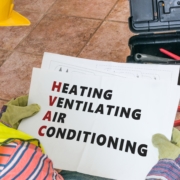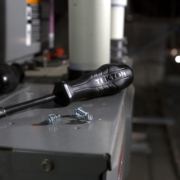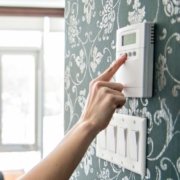HVAC Solutions For Today’s Modern Homes
With technology constantly changing, it makes sense that heating and cooling systems would too. But not all HVAC systems in modern homes are as efficient as they used to be. As it turns out, many modern homes are making it harder for HVAC systems to be efficient. Whether it’s poor ventilation or too many windows, the bills might go up without you realizing it. So, what solutions are there for HVAC systems in today’s modern homes?
How Do Modern Homes Affect HVAC?
Many new homeowners look for homes that are stylish and more comfortable. When touring a modern home, most are quick to mention how nice the architecture is. But sadly, not everyone considers HVAC systems when buying a new house, and it shows. Many newer structures make it harder for HVAC to be efficient for several reasons.
One aspect of modern homes that is making heating and cooling harder is windows. People love having extra light in their rooms, but it comes at a cost. Newer homes have more windows, which look nice at first, but they make your system work harder to control the temperature. Homes used to be designed with only 5% windows on the exterior wall space. Now, windows take up closer to 30%!
On top of that, the solar heat gain coefficient (SHGC) of windows often has higher ratings in newer homes. So, more windows with more heat gain are the opposite of progress for HVAC systems. Duct leakage is another common issue for heating and cooling. It causes about 30% to 40% of heat loss in homes.
But there’s no need to blame new homeowners entirely. For the average person, HVAC efficiency isn’t their first thought, so they might not even recognize these problems until it’s too late. If you recently bought a new home or if you’re looking to do so, become familiar with these modern home issues related to HVAC because solutions are available.
How Can You Improve Your Home’s HVAC?
Just because HVAC in modern homes isn’t ideal doesn’t mean you have to give up. There are plenty of ways to improve your home’s heating and cooling without having to break the bank.
For example, you can’t easily remove windows from your home, but you can replace them. The ideal SHGC rating for a window is between 0.3 and 0.4, but it’s possible that your newer windows are much higher than this. You might need to reach out to a professional to determine the specific values of different windows.
Another way to improve your HVAC’s efficiency is to ensure that your ducts are sealed. Luckily, duct sealing is required for new homes in most areas. But if for some reason the ones in your home aren’t, you could save up to 25% of the heat loss in your home by sealing them.
Improving insulation in your home is also a great way to keep hot or cold air inside. Sometimes, attics aren’t insulated properly, which can cause the temperature inside to fluctuate more than you realize. So, ensure that your new home is insulated as well as possible.
The Future of HVAC Systems
While the designs of modern homes aren’t always ideal for heating and cooling, HVAC systems are still improving. It’s predicted that we will say goodbye to furnaces in the future. Instead, it’s suspected that more energy-efficient models like heat pumps will take control.
In Canada, emissions from heat and electricity harm the environment more than transportation. On top of that, furnaces have to generate heat, making your home less convenient and less eco-friendly the more they run. If your modern home has too many windows and not enough insulation, think of how much heat and energy you’ll be wasting with a furnace.
A 2014 study estimated that about 70% of Canada’s residential energy came from fossil fuels. About 55% of the heating systems used are forced air furnaces while only 4% are heat pumps. Of course, adding better insulation to your home can certainly make a difference, but heat pumps are ultimately the system of our future.
Instead of generating heat like a furnace and then wasting it if it escapes your home, heat pumps transfer heat. They take heat from the outside air and transfer it inside when it’s cold and vice versa when it’s warm. Thus, heat pumps only move heat around rather than making more of it. This process isn’t just great for efficiently using HVAC in modern homes, but it will also benefit the planet too.
Is it Time for You to Make the Switch?
Change takes a while to occur, so saying goodbye to gas furnaces could be very distant in the future. But just because everyone isn’t making the switch yet doesn’t mean you can’t get ahead of the game.
If your modern home is having troubles holding hot or cold air, consider making changes to your windows or insulating your walls better. And if you’re still using a gas furnace, think about switching to a heat pump. Heat pumps will save you money and make our environment safer in the future. So, it can’t hurt to make the change sooner rather than later.
Are you thinking about making changes to improve HVAC in modern homes? West Isle Heating and Cooling is happy to help with all your HVAC needs. If you have questions about improving the heating and cooling in your home or about getting a more efficient system, contact us today!






